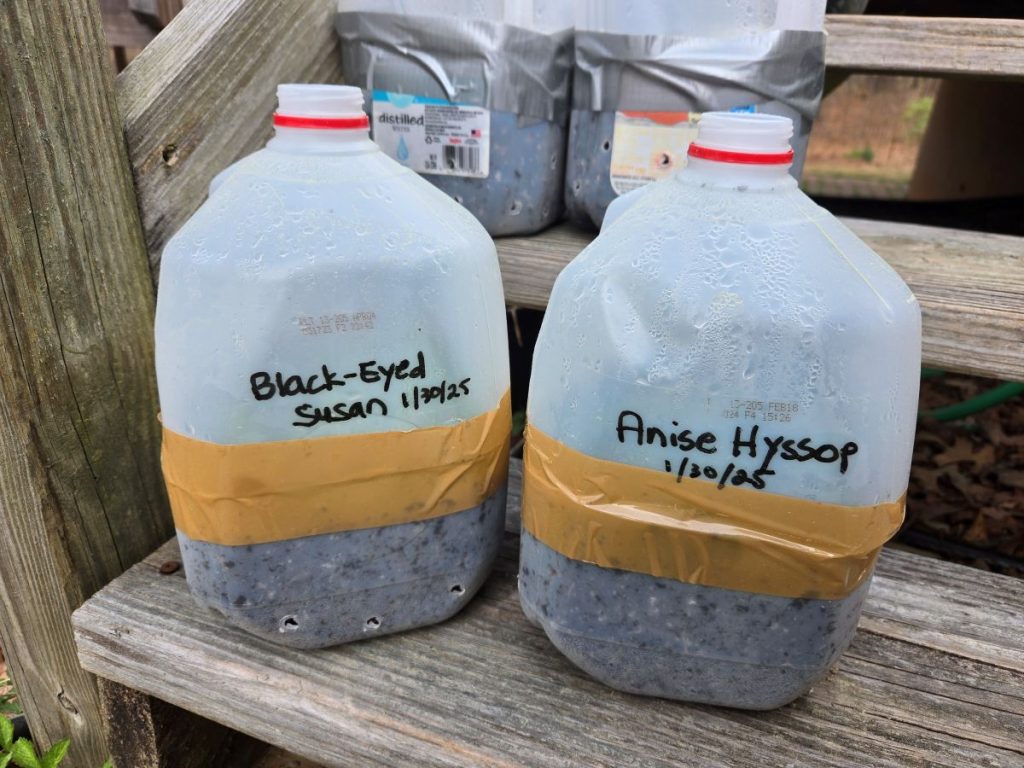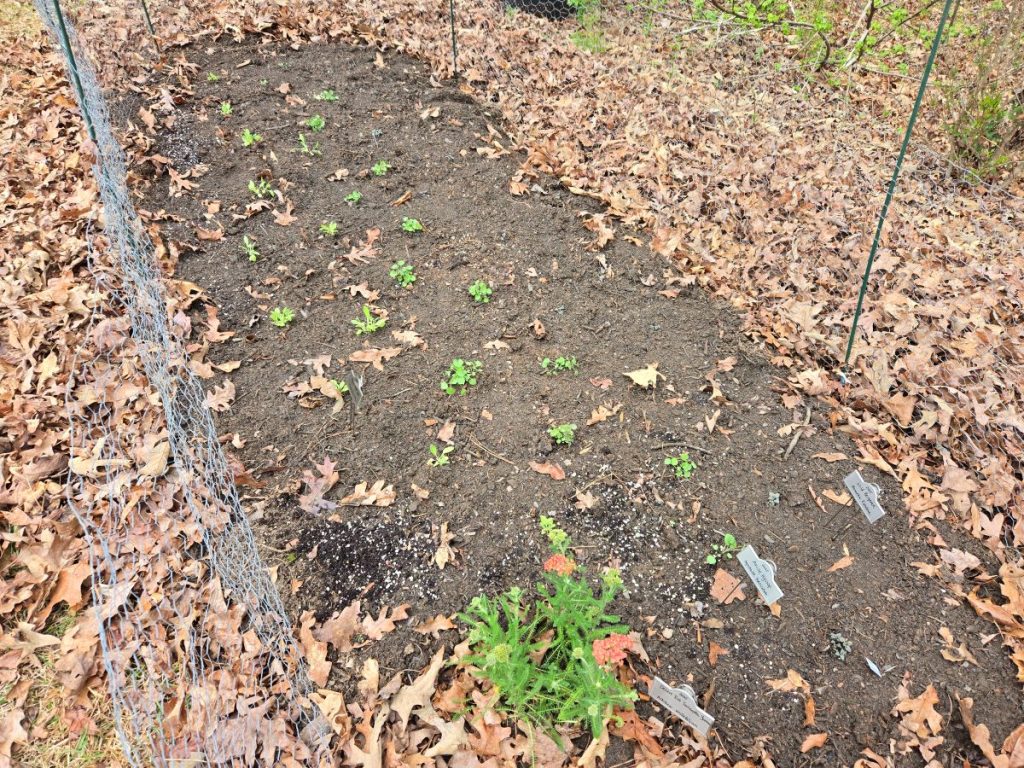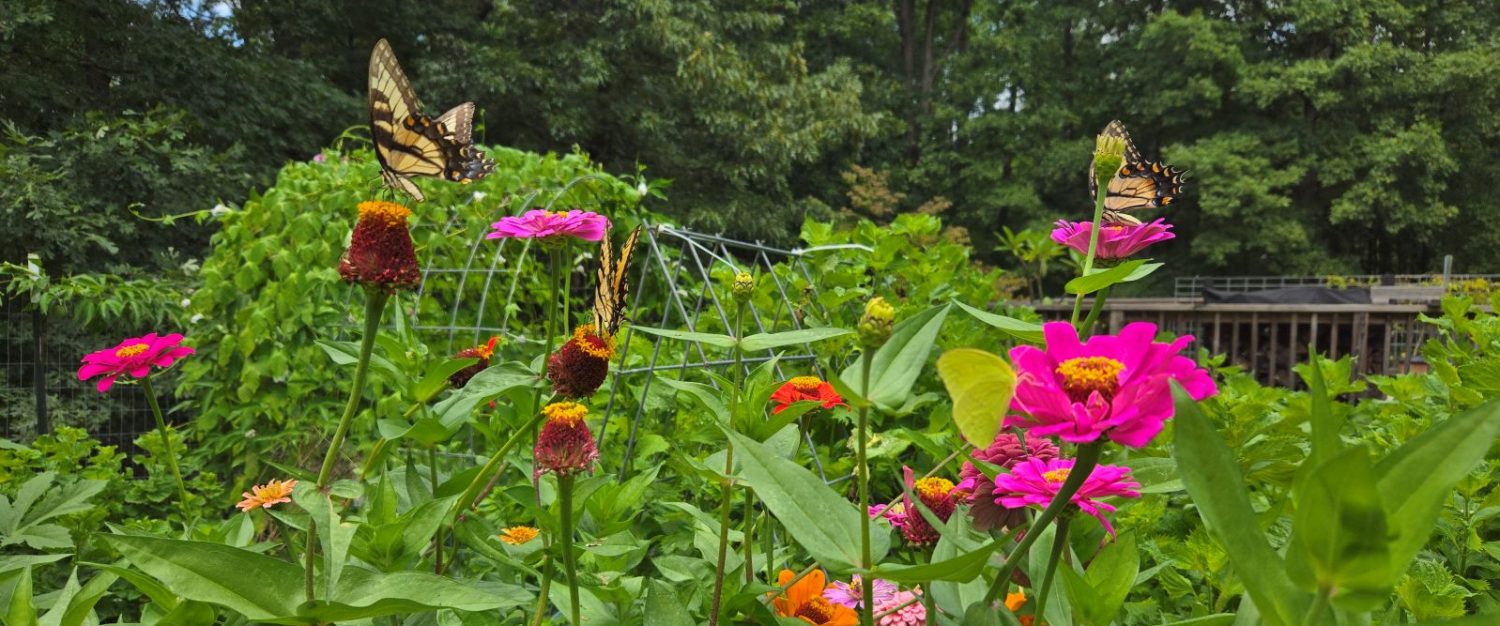As previously mentioned, the only flowers I started from seeds were zinnia, vinca, and marigold. They are very easy to grow, and all I needed to do was to simply spread seeds on my raised bed after the last frost date and they grew. This year, I decided to allocate a small portion of our backyard as a pollinator-friendly garden. Buying established plants can be expensive, so I decided to try the winter sowing method to grow plants from seeds.
How to start winter sowing
Any transparent or translucent containers with a hole(s) on top and bottom for drainage would work. Many people use milk jugs as they are widely available and effective. All you have to do is to poke a lot of holes at the bottom for drainage, cut a milk jug in half, right below the handle (leave an inch so that the bottom and top are still attached to it), add potting mix up to where the handle is, plant seeds, and seal it with duct tape. Make sure to remove the cap at the top so that warm air can vent out and rain can go in.
Why winter sowing works for perennials
Many perennials require a process called cold stratification in order to germinate. They germinate after they go through cycles of freezing and thawing. Once it’s set up outside, seeds are protected from strong winds or birds. It will receive rain/snow from the open area from the top, keeping the soil moistened. When the time comes, they just sprout on their own.
When to sow seeds
It is best to sow seeds using the winter sowing method in January or February so that they get exposed to enough winter elements. In my area in Zone 7B/8A, I did winter sowing on January 30, 2025.
What seeds work for winter sowing
Any perennials that are hardy in your zone should work. These flowers have no problem going through cold and wet weather during winter, as that’s what they do in the nature. They drop seeds in the fall, and they sprout in spring. Winter sowing method works for annuals, but they need to be started later as some of these flowers are not as “hardy”.
My winter sowing in 2025
I really wanted to grow black-eyed susan, anise hyssop, and wild bergamot as a starter this year. Among these three, black-eyed Susan and anise hyssop require cold stratification. I only had three milk jugs anyways, so those are the two I started on January 30th, 2025.

Remove the lid and drill plenty of holes at the bottom to make sure drainage isn’t an issue (it is not obvious in the picture above, but there are at least 20 holes in each container). As some reported, slugs can get in there and eat young sprouts. So, I left them on the stairs. It took a while to sprout, but in late February I started to see small sprouts in both containers.
The temperature in our area has been consistently hitting the upper 60s and low 70s in the last two weeks, and they had multiple true leaves. On March 29th, I opened the containers for the first time.

They were looking great. I was not sure whether I should leave them a bit longer in the jug, but we are expecting to have warmer weather in the 80s, so I decided to go ahead and open the containers and transplant them in the pollinator garden area I just created.

It was very difficult to break them into an individual plant, so I divided into chunks and planted them. They will sort things out on their own. I am really looking forward to how they are going to turn out this year. They may not flower for the first year, but that’s okay. As long as they are well established and flower next year, that’s well worth the wait!
Do I do winter sowing again?
Definitely YES! I am already collecting milk/water jugs for 2026. My plan is to expand my pollinator garden in the back, so I need more plants! Winter sowing gave me something to do in the middle of winter and look forward to. It required almost no attention from me. I didn’t have to water them as they were consistently moist throughout winter. If you want to grow perennials and need a lot of plants, winter sowing could be a great method that works for you.
Happy Gardening!
